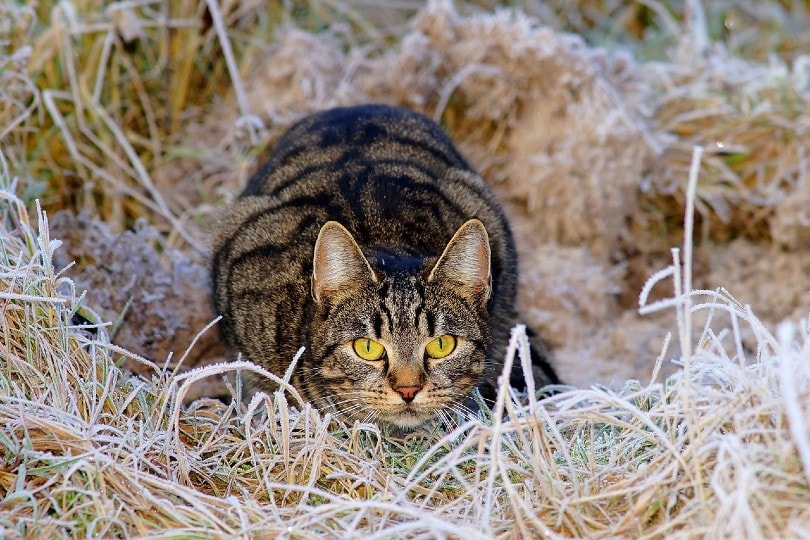
If you’ve ever owned a cat, it’s guaranteed that you’ve seen them wiggle their butt. Social media also has countless GIFs and videos highlighting cats doing the best butt-wiggling that you’ve ever seen! So, why exactly do they do this? Why do cats wiggle before they pounce on something?
The simple explanation is that there is no simple explanation. We don’t know exactly why cats do this. However, experts believe that it’s a combination of testing traction, preparation, and simply because it’s fun.
We get into everything about butt wiggles here, so you can understand your cat’s behavior better.
Are Cats Just Weird?
We love cats and are often perplexed by them, and yes, they can be kind of weird. Cats are full of strange and quirky behaviors, and the butt wiggle is just another to add to the list.
However, they do seem to do everything for a reason—even though sometimes we might think that they are being annoying on purpose!
We see the famous butt wiggle behavior when the cat is working themselves up to pounce on unsuspecting or sometimes suspecting prey. It’s usually a toy or your hands and feet, particularly when they are under a blanket. But why do they do this rather inexplicable behavior?
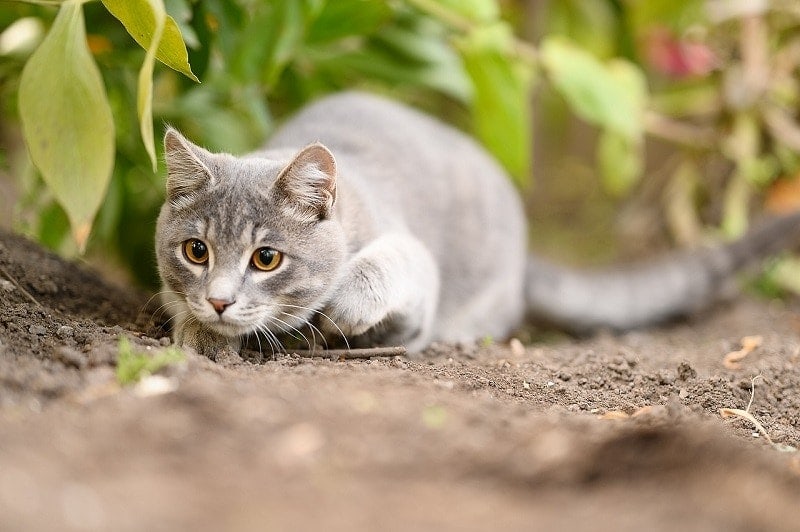
Prepares Them for the Big Jump
No one knows for sure why they do this, as there haven’t been many studies on it. But some veterinarians believe that it is how cats physically prepare themselves for the chase and pounce. Even big cats (lions, leopards, tigers, etc.) occasionally engage in this wiggling behavior.
When cats walk, their legs alternate, but when they jump and pounce, they use their back legs simultaneously. They have a large amount of power in those hind legs, which are instrumental in the enormous jumps that they are able to make.
Those strong legs are essential for the cat to catch their meals and escape danger. Cats can jump about six times their height, so a 10-inch-tall cat can jump about 5 feet!
The butt wiggle might just be like warming up before a workout: stretching those muscles before the all-important pounce.
Gives Them Traction
It’s also thought that cats are trying to ensure that they have enough traction before they launch themselves at their prey. The wiggle could be giving the cat’s hind legs extra purchase, pushing the back legs down so they’ll pounce at full speed when they push off.
They are also possibly testing the strength of the ground. If there are loose stones or gravel, wiggling and taking small steps can give them extra security for a successful leap. The wiggle essentially helps cats determine how solid the ground is and whether they can jump safely.
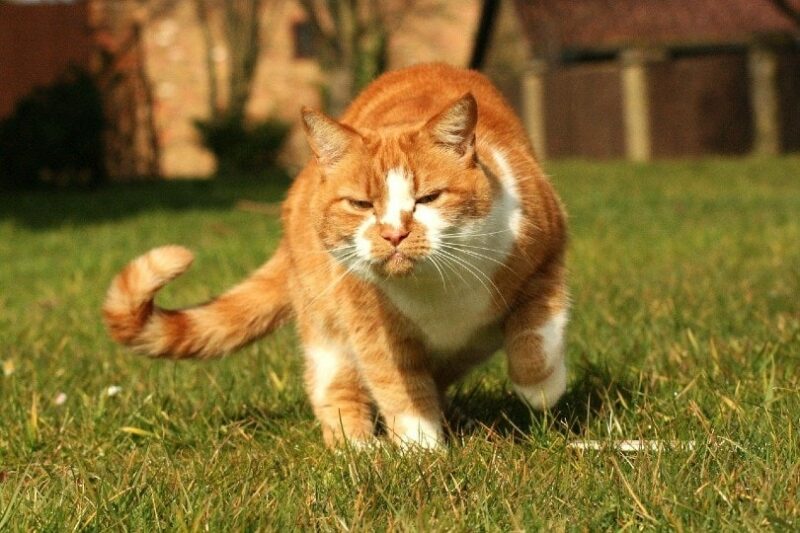
For Fun
Hunting prey undoubtedly creates a sense of excitement and anticipation in cats. It’s possible that the wiggle helps them let off a bit of steam. Releasing extra energy before zeroing in for the kill might help explain the butt wiggle.
Dopamine is a neurotransmitter made by the body and used by the nervous system. It is responsible for pleasure sensations based on specific activities. For cats, dopamine can be released while playing and hunting, which can influence how they hunt.
The dopamine fires while the cat is waiting to pounce, and the wiggle might be helping them zero in on their prey. Once the cat has failed or been successful in catching the prey, the dopamine stops firing.
Is the Wiggle Instinctual or Purposeful?
Considering that hunting is a significant part of their play, the wiggle is probably both instinct and intentional. When they are kittens, almost all their play revolves around learning hunting skills.
They stalk, pounce, bite, and grab each other, which functions like training for when they need to use these skills as adults. This type of play also helps them develop and exercise their muscles.
When you watch athletes before a big game or competition, they do a great deal of swinging, shaking, and stretching their limbs. This is the human method of butt-wiggling. When we do these warming-up routines, it’s instinctual but also intentional.
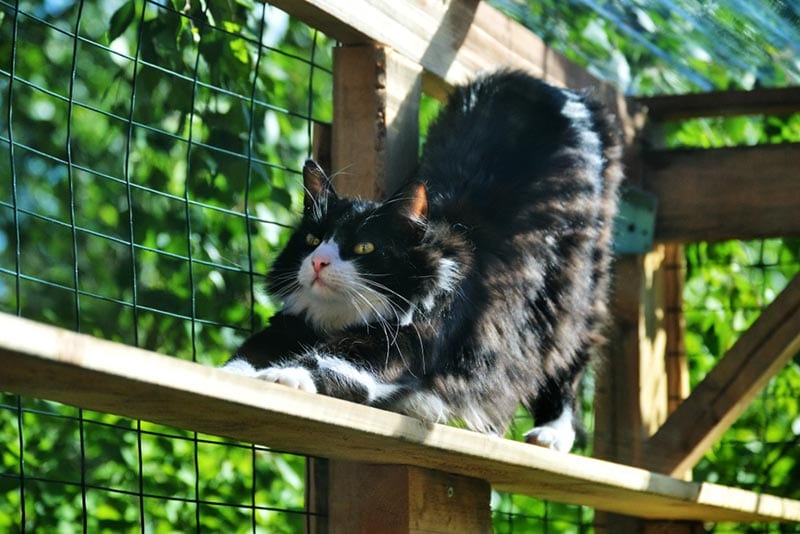
How Does Stalking and Pouncing Work?
Before a cat pounces, they start by stalking their prey, which they are exceptionally talented at. They are natural hunters due to their flexibility, tail designed to help them balance, excellent sense of smell, and eyes that can detect even the slightest movement.
They are skilled at noiselessly approaching their prey, and when they are close enough, they’ll get into the pounce position.
Cats ready themselves for a pounce by crouching low to the ground. You’ll notice that their eyes are dilated, and they are quite tense and still, with little body movement. They’ll even flatten their ears, so they’ll be harder to spot.
Cats that aren’t given the opportunity to stalk and pounce anything, whether a toy mouse or your feet, will become miserable and destructive. They’ll shred your furniture and their play will become overly aggressive.
Make a point of playing with your cat as much as possible. Use toys like feather wands or dangling toys to engage their hunting instincts.
Do All Cats Do the Butt Wiggle?
For the most part, all cats can wiggle their butts, but they won’t always wiggle before a pounce. You might find that some cats have noticeable wiggles and others have subtle ones.
Some cats never seem to wiggle at all! Just because a cat is crouched into a pouncing position doesn’t guarantee a butt wiggle. That said, it is common and adorable behavior.
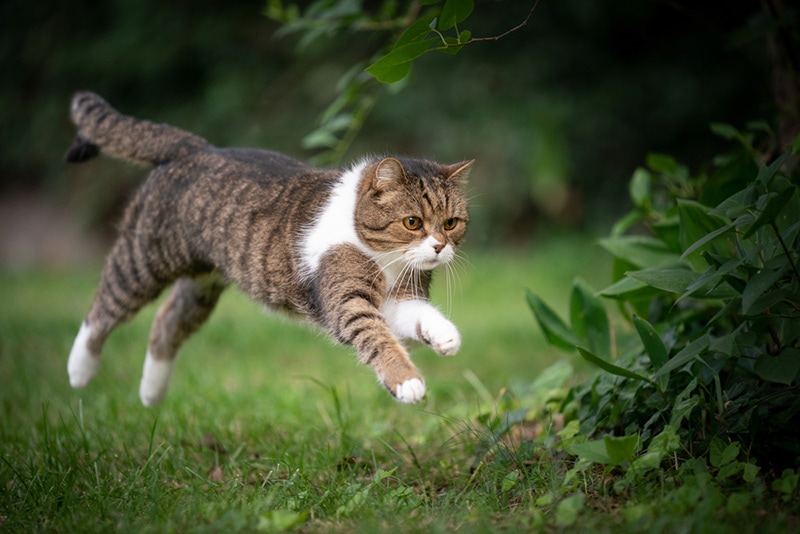
Conclusion
Hunting behavior is innate to all cats, which also includes the butt wiggle. It all starts with the stalking and ends with the pounce. With their instincts and lightning speed, cats are amazing at catching things—even flying in midair!
Whether the wiggle is used to keep the cat balanced or give them extra traction or it’s just because they are excited, we hope that they keep on doing it!
Featured Image Credit: Karsten Paulick, Pixabay







